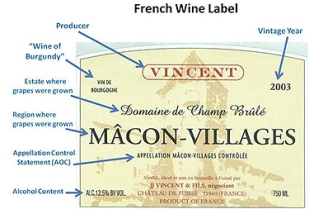
As a sommelier customers have been asking me for “sulfite free wines” for years. This is such a loaded question since sulfites naturally occur during the fermentation process. I suggest looking for a wine that specifies on the label “no added sulfites.” If the label says organic you can also be assured that there are no added sulfites in the wine. This should steer you clear of that terrible “wine headache.”
Sulfites are not the only thing wine consumers are concerned with in this green wine movement. How “clean” the winery is has become an area of marketability. I find the whole regulation process similar to the difference between wine labeling in Europe versus America. If a wine carries the label Sancerre it must contain a wine made from the Sauvignon Blanc grape, a label on a red wine marked Burgundy must be made from Pinot Noir. Yet in America the rules are different. Pinot Gris? Pinot Grigio? It is actually the same grape yet for marketing choices one Washington winery may choose to use the label Pinot Gris and a winery in California chooses Pinot Grigio. Fume Blanc, a word created by the California Mondavi Empire is another unregulated term. Some say it means smokey and is attributed to the fog seen over the water on the coast of California that looks like smoke. On the other hand, for Spanish wine to be classified reserve it must specially be aged for at least three years and spend at least one in oak.

Sustainable viticulture is the new gray area in wine labeling. Generally sustainability means the winery attempts to use earth friendly farming practices. This could include solar powered energy sources, composting, and more natural alternatives to prevent pests and maintain the soils health. Yet the term is loose and you will not know from the label how many of these practices are employed. The term organic is regulated and is not an easy title to obtain. In order for a wine to be labeled as “organic wine,” it must be made from 100% certified organic grapes and contain no added sulfites.
And last to go even one step further is the holistic world of biodynamics. For a winery to label itself as biodynamically farmed the regulations and process to obtaining certification are extremely strict. This process, based on the teaching of Rudof Steiner considers the entire vineyard to be one complete living organism. The goal is to create harmony between the earth, the winemaker, the vineyard, and the cosmos. Some may dismiss this as hocus pocus but it is actually the most highly regulated of the “green” choices.
The Saltwater Grille wine list contains many “Clean Vineyard” choices. Frogs Leap winery is certified organic. La Crema, Sonoma Cutrer, and Honig are just a few of the sustainable group. Randall Grahams Bonny Doon wines are in the biodynamically farmed category. And most notably J. Lohr is taking great steps to make their clean vineyard practices known.
http://www.jlohr.com/sustainability_main.html
Hopefully this sheds some light on what labeling terms to take seriously. Grower Champagne’s versus the conglomerates and how Veuve Clicquot has won in the world of PR. Now that’s another marketing area in the wine world to tackle. Another day.
Brett Clugston, SWG Sommelier

